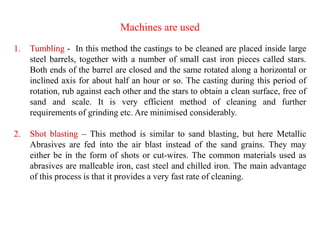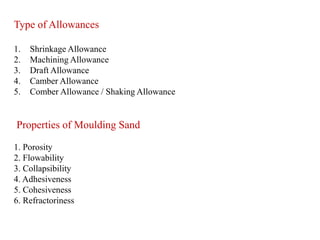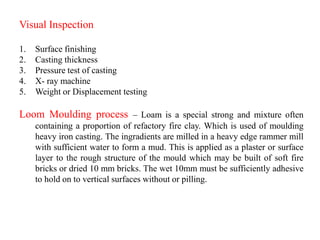This document provides information on moulding processes and materials used in a foundry workshop. It discusses the different types of metals used in casting like ferrous, non-ferrous, and alloy metals. It also describes the various types of sand used for moulding like green sand, dry sand, facing sand, parting sand, and core sand. The document outlines the tools and equipment used in moulding like moulding boxes, rammers, riddles, and patterns. It also explains the steps involved in mould making, melting metals, fitting castings, and inspecting the final products.































